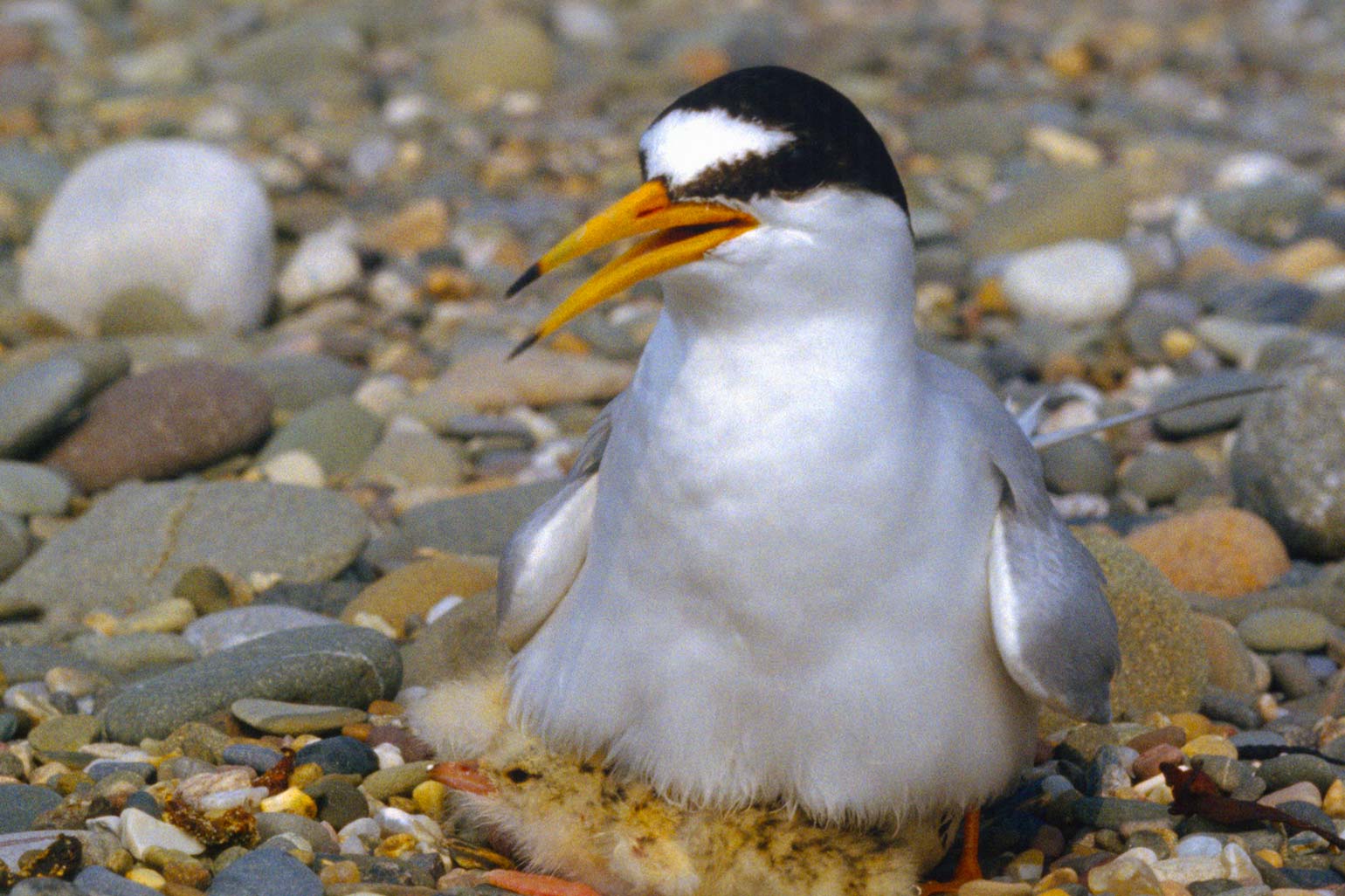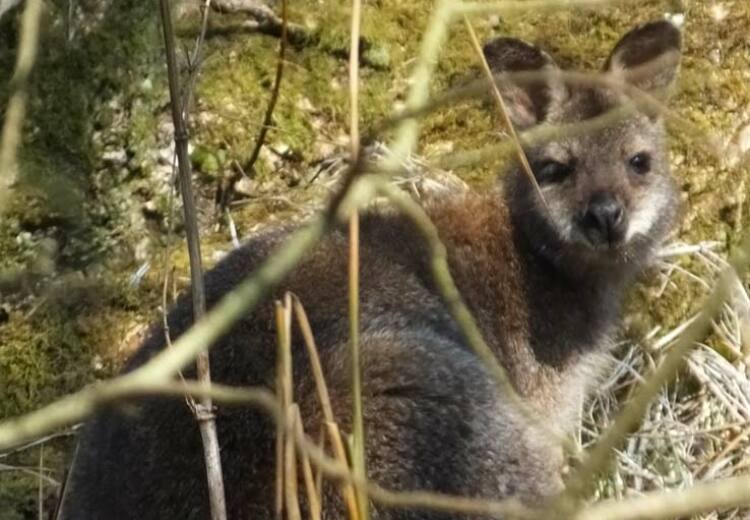
For the birdwatcher the Isle of Man offers a rich assortment of species, several of which are rarities in other parts of the British Isles, in a variety of habitats of exceptional beauty.
The Island is about 31 miles/50km in length and 12 miles/20km at its broadest point and occupies a central position in the northern part of the Irish Sea. It is dominated by two ranges of hills, clad in heather or grass moorland which rise to 2034ft/621m at Snaefell in the north and to 1585ft/483m at South Barrule.
There are flat, but ornithologically valuable lowlands in the north (which include the Ayres and Ballaugh Curragh) and the southeast with the Langness peninsula. The coastline is mostly composed of slate cliffs, interrupted here and there by sandy bays and tiny shingle coves. In the north there are sand dunes which separate the lowland heath of the Ayres from the sea, while across the narrow Sound off the south-west point of the main Island is a hilly islet, the Calf of Man, site of an important Bird Observatory administered by Manx National Heritage (MNH).
Footpaths
Well-marked long distance footpaths explore almost the entire coast, providing frequent opportunities of seeing such Manx specialities as Peregrine, Chough and Raven. Fulmar and Shag are widely distributed but there are only four Cormorant colonies. A few of the more spectacular cliffs have Kittiwake and Guillemot colonies, while there is a good scatter of places where Black Guillemots nest. Stonechats are common on the gorse and bramble scrub, which is such a typical feature of the steep coastal brooghs - a Gaelic word for the grassy slopes, which lead down to the sea. Except for the height of the summer, parties of Purple Sandpiper can be found at several well-established sites on the rocky coast. Little Tern, with as many as seventy pairs in some years, are the most important breeding birds of the Ayres shore.
The Millennium Way takes the walker from Sky Hill near Ramsey, 27 miles/42 km, over the hills and through farmland to Castletown. This is Raven country, with the possible chance of Merlin; but the bird of the Manx hills is now the Hen Harrier, which first nested in 1977 in the failed plantation of Glen Rushen. There has since been a rapid expansion throughout all appropriate habitats. By 1990 more than forty pairs were nesting and the largest roost in Western Europe had become established in the Ballaugh Curraghs, with smaller numbers at Stoney Mountain.
Waterways
Along the fast flowing streams Grey Wagtails are common, but surprisingly the Dipper is almost unknown and while Common Sandpipers are seen regularly on passage, they have rarely bred. Many of these streams pass through wooded glens where Chiffchaff, the increasingly successful Blackcap and Treecreeper are the typical birds - Silverdale, Port Soderick and Laxey Glens are best for birds while Ballaglass, Tholt-y-Will, Glen Helen and Glen Maye have the finest scenery. The steep wooded slopes overlooking the northern plain have breeding Sparrowhawks and Woodcock and here there is always the chance of a Wood Warbler in May.
Plantations
Much of the moorland has been turned over to conifer plantations. Some have been established for more than 100 years and have ornithologically attractive clearings and areas of failed plantation. During the last decade Siskin, and more recently Crossbill, have begun to colonise the coniferous plantations, while the smaller plantations and shelter belts frequently support a pair of Long-eared Owls (as in Ireland, the commonest owl) and the very young plantations may attract Short-eared Owls.
Reservoirs
Of the several reservoirs, Kerrowdhoo holds a variety of wildfowl in winter, as do the two smaller Foxdale dams - Eairy and Kionslieu. In the north, the tiny Glascoe Dub and nearby Ballacorey are always worth a look.
Curraghs
Curragh or Willow Carr is one of the most important habitats, the prime example being Ballaugh Curragh, a considerable expanse of marshland supporting a rich growth of willow and birch, together with Bog Myrtle. Renowned for its great Hen Harrier roost, it has a fine variety of birdlife at all seasons. The less extensive Greeba Curragh, stretching eastward from St John's, is easily reached by the old railway track from which roding Woodcock can invariably be seen on spring evenings.
Information for visiting birdwatchers
Bird Recorder and BTO Regional Representative:
Pat Cullen, telephone (01624) 623308, e-mail bridgeen@mcb.net.
Bird-ringing
As a self-governing Crown dependency, the Isle of Man has its own Wildlife Act and licensed ringers from elsewhere are required to obtain an additional Manx licence. Apply to the Convenor, Wildlife Committee, c/o Department of Environment, Food & Agriculture, Thie Slieau Whallian, Foxdale Road, St John's, IM4 3AS.
There is an active ringing group, which undertakes ringing activities throughout the Island. Anyone wishing to ring on the island should contact Kevin Scott, c/o Manx BirdLife, 35 New Road, Laxey, Isle of Man IM4 7BG - telephone 01624 861130.
Visiting the Calf of Man
Several boat trips daily from Port Erin during the summer - see notice board at harbour for times and fares. Day trips allow several hours on the islet and there is also dormitory accommodation at the Bird Observatory - reservations through Groups Booking Officer at the Manx Museum.
Manx Ornithological Society
Secretary: Anne Kaye, "Cronk-ny-Ollee", Glen Chass Road, Glen Chass, Port St Mary, Isle of Man, IM9 5PL - telephone 01624 834015.
The Manx Ornithological Society publishes the annual bird report 'Peregrine', copies of which are obtainable from Anne Kaye.
Manx BirdLife (formerly known as Manx Bird Atlas)
A charity initially formed to undertake a five year (1998 - 2002) research programme to establish the breeding and wintering populations of birds on the Isle of Man. Following the publication of the first Manx Bird Atlas, the charity is continuing with detailed studies of the birds of the Isle of Man, including working on a new atlas project. The charity employs fieldworkers to carry out specific surveys but welcomes records supplied by members of the public which will enhance the data collected. Further details about the project and how you can assist can be found by contacting Manx BirdLife.
Manx Wildlife Trust
The Manx Wildlife Trust has 20 reserves (230 acres) situated throughout the island.







